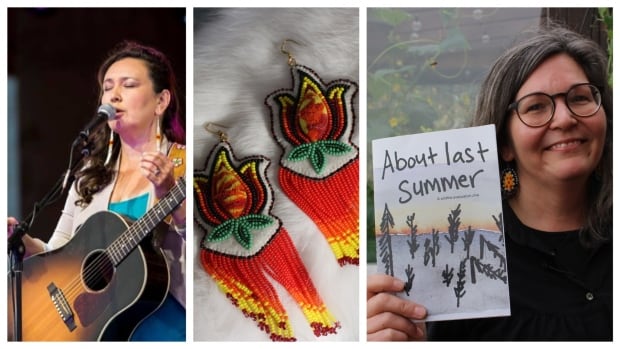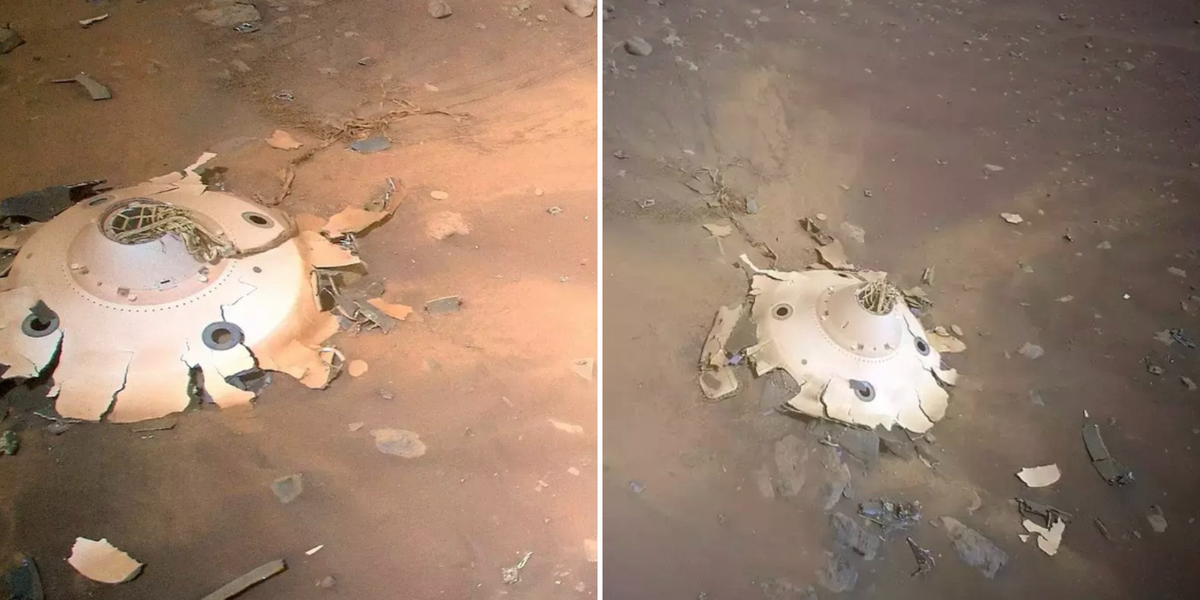From Ashes to Art: How N.W.T. Artists Found Beauty in Fire's Wake

Wildfires are often perceived as a force of destruction, a truth the Northwest Territories knows all too well. These infernos can raze forests, decimate communities, and leave behind a trail of devastation. However, much like they breathe new life into the natural landscape, wildfire has also ignited a surge of artistic expression in the territory.
A year has passed since the evacuation order for Yellowknife, Ndilǫ, and Dettah was issued, and the collective experience of fleeing the flames continues to shape art in the N.W.T. From intricate beadwork and evocative paintings to poignant music and self-published magazines, the territory's artists have found ways to process their experiences and transform them into powerful works of art.
Natasha Cleary's Beaded Flame
Nestled amongst the wares at the Mackenzie Cabins in Fort Providence, a pair of vibrant earrings stand out â not for sale, but for the story they tell. At first glance, the design appears to be a flower, but upon closer inspection, the petals reveal themselves to be flames. Tufted caribou hair, dyed in shades of red, orange, and yellow, forms the central petal, surrounded by beaded outer petals. The fiery bloom sits nestled in green leaves, with warm-coloured tassels dangling below.
These earrings are a creation of Natasha Cleary, who crafted them while living in a temporary dwelling in Hay River after her own home in Enterprise was destroyed by fire. With the support of her mother, who provided her with supplies after losing her own, Cleary poured her emotions into the design.
âThe only thing that was on my mind really was the fire and everything that happened. So I kind of just went with it, and I don't know, it just spoke to me I guess. It came out looking like fire," she said.
Cleary, a seasoned beadworker who has also taught herself the art of tufting, finds solace in sewing and crafting jewellery. The creation of these earrings, however, held particular emotional weight, especially as she had to redraw her original patterns after losing them in the fire.
"I had to redraw it all over again and put my heart and emotions into every piece that I did," she said. "Everything's not going to be exactly the same as it was, but you know, I guess in a way it's probably made things more beautiful."
Her mother, who owns the cabins in Fort Providence, immediately claimed the earrings, acknowledging their powerful message: "It just shows that after something devastating, I guess you can still create beautiful things."
Sara Komarnisky's "About Last Summer" Zine
Sara Komarnisky, a Yellowknife resident, demonstrated remarkable foresight when she packed her watercolour paints before fleeing the city with her family. In the weeks that followed, she captured the scene of the burned trees along Highway 3 at dawn, documenting the places she and her family visited and the homes that provided temporary shelter.
Komarnisky found solace in the act of painting, a creative outlet that prevented her from succumbing to the overwhelming anxiety of constantly checking for updates on the fire. Known for her collaborative spirit, she took to Facebook, asking others if they, too, were turning to art to process their experiences.
"I'd like to put it together into a zine," she announced.
Komarnisky saw the creation of the zine â a self-published magazine â as a way to make something positive out of the traumatic event. She named her work "About Last Summer," a title that reflects her desire to find a sense of closure. After completing the booklet in the winter, she had 150 copies printed and distributed to little free libraries throughout Yellowknife.
"After that, it kind of just felt like I could put the whole experience to rest," she said.
The wildfire, however, has continued to shape Komarnisky's life and art in the year since. The experience has shifted her priorities, leading her to volunteer with the Yellowknife Women's Society and finally pursuing creative projects that had been put on hold.
Leela Gilday's "Gentle the Heart"
Leela Gilday, a Dene musician based in Yellowknife, frequently incorporates themes of climate change into her performances. The 2023 wildfire season and the subsequent evacuations have made her message even more urgent.
âI see the need for the dissenting voice and to try to disrupt those structures of power and that kind of extractive relationship that's inherent to capitalism, that extractive relationship with the earth,â she said.
Gilday channeled her personal experience of fleeing the fire into a composition for the Viva Chorale, a choir based on Salt Spring Island in British Columbia. The piece, titled "Gentle the Heart," begins and ends with a prayer in Dene Kede, asking for ancestral strength to live a good life.
âThe piece that I wrote was directly influenced by the evacuation," explained Gilday. "I talk about opening our minds and hearts to that connection, reminding ourselves about that connection to the land and water, how we see our brothers and sisters, you know, all the animals, the birds, the fish, the land, the water, the rocks impacted by this climate crisis, and how we are responsible for that in that relationship.â
Gilday travelled to Salt Spring Island to witness the performance of her piece, an experience that left her deeply moved.
âTo hear that many voices raised, you know, trying to remember that connection and trying to, I guess, ultimately change the way, the course that we're headed on,â she said. âI cry every time I hear it.â
Gilday believes that art is a powerful tool for processing trauma. As a songwriter, she sees her role as reflecting the world back on itself, allowing people to engage with complex issues on a deeper emotional level.
âChange is really the only constant that we all have. And so it might not look like exactly how we're living right now, but I do strongly believe that we can make it through this and come to a better, more symbiotic relationship as we have in the past.â
"Didn't See This Coming"
Before the wildfire threatened Fort Smith, a pair of binoculars stood ready for tourists to gaze out over the Salt Plains. Rosalind Mercredi, owner of the Down to Earth art gallery in Yellowknife, recounted how a friend who had helped fight the fire discovered the remains of the binoculars. The intense heat had melted them into blobs of aluminum.
âHe picked them up and said he could submit those to the art show,â said Mercredi.
The melted aluminum blobs became part of Mercrediâs wildfire-themed art show. Together with Dave Kellet and Fran Hurcomb, she transformed Albert Bourque's discovery into a thought-provoking piece titled "Didn't See This Coming."
The aluminum blobs were placed atop a framed photograph of the same lookout where the binoculars once stood, creating a powerful visual commentary on the unexpected nature of the wildfire.
âIt got a lot of conversations at the art show," recalled Mercredi.
The wildfireâs impact on Mercrediâs own artistic practice has been subtle but profound. She has begun to create jewellery with fire colours and has increasingly gravitated towards dark glazes that evoke the silhouette of burned trees.
âIt does influence your art, that whole experience,â she said. âEvery once and a while you look at something differently, or you feel something differently.â
Mercredi organized the "After the Fire" art show, which provided a platform for artists to process their own complex emotions surrounding the evacuation, including worry, joy, and guilt.
âAll the pieces in the show were somebody's feelings and somebody's story and somebody's interpretation of things," she said. âI think putting that together, just what everybody else was feeling, is a way of sort of helping yourself and helpingâ¦all the artists look at a shared experience in different ways.â
One year after the wildfire evacuation, the Northwest Territories' artists continue to find beauty and meaning in the ashes, demonstrating the resilience of the human spirit and the transformative power of art.





